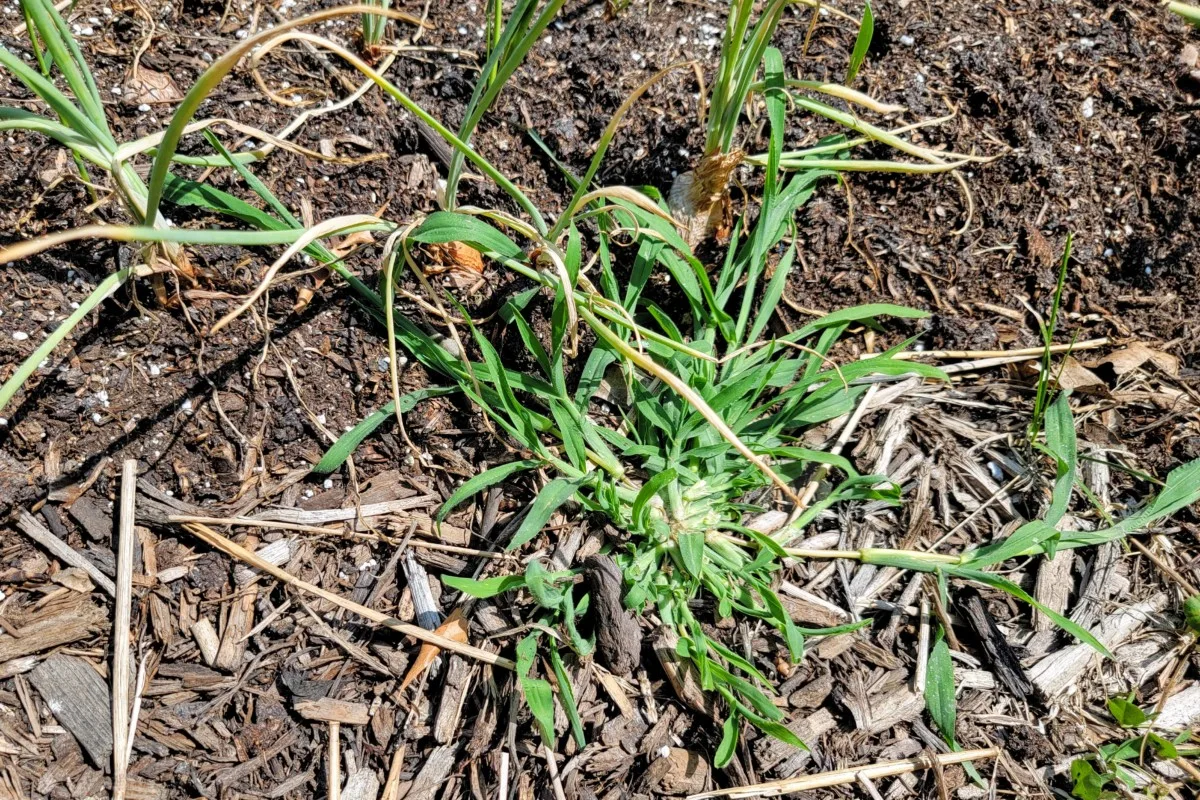
Crabgrass is a plant that incenses those who want a perfect emerald lawn. But organic gardeners in the know understand that what is a weed to some can actually be a beneficial plant for others. Still, even organic gardeners will sometimes want to get rid of crabgrass, so it’s important to know how we can do so naturally.
In this article, we will help you get to the bottom of this contentious issue. We will explore what crabgrass is, how it behaves, and whether you really want to get rid of it, before exploring the natural, organic ways that you might do so.
What is Crabgrass?
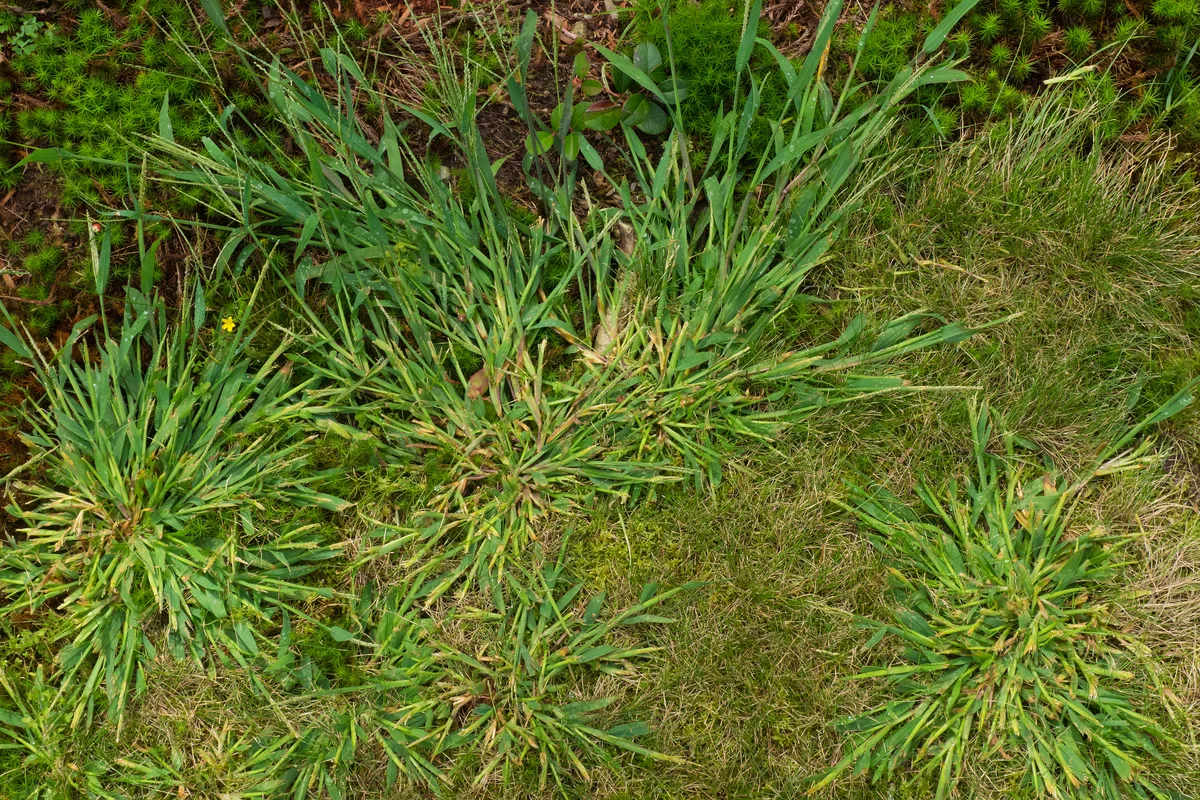
Crabgrass, also known as finger-grass, is a genus of plants in the grass family known as Digitana. It is often considered to be a lawn weed in the US and other parts, while in other regions it is used as a pasture or forage plant, and considered to be a useful crop.
Crabgrass may be familiar to many gardeners as the spindly, spreading grass that pops up in bare or sparse patches in a grass lawn, and outcompetes other neater and more ‘attractive’ grass species.
While it looks lush and green over the summer months, it can die back or look scraggly in the winter, and sometimes creates spaces where other weed species can thrive.
Is it Really Necessary to Get Rid of Crabgrass?
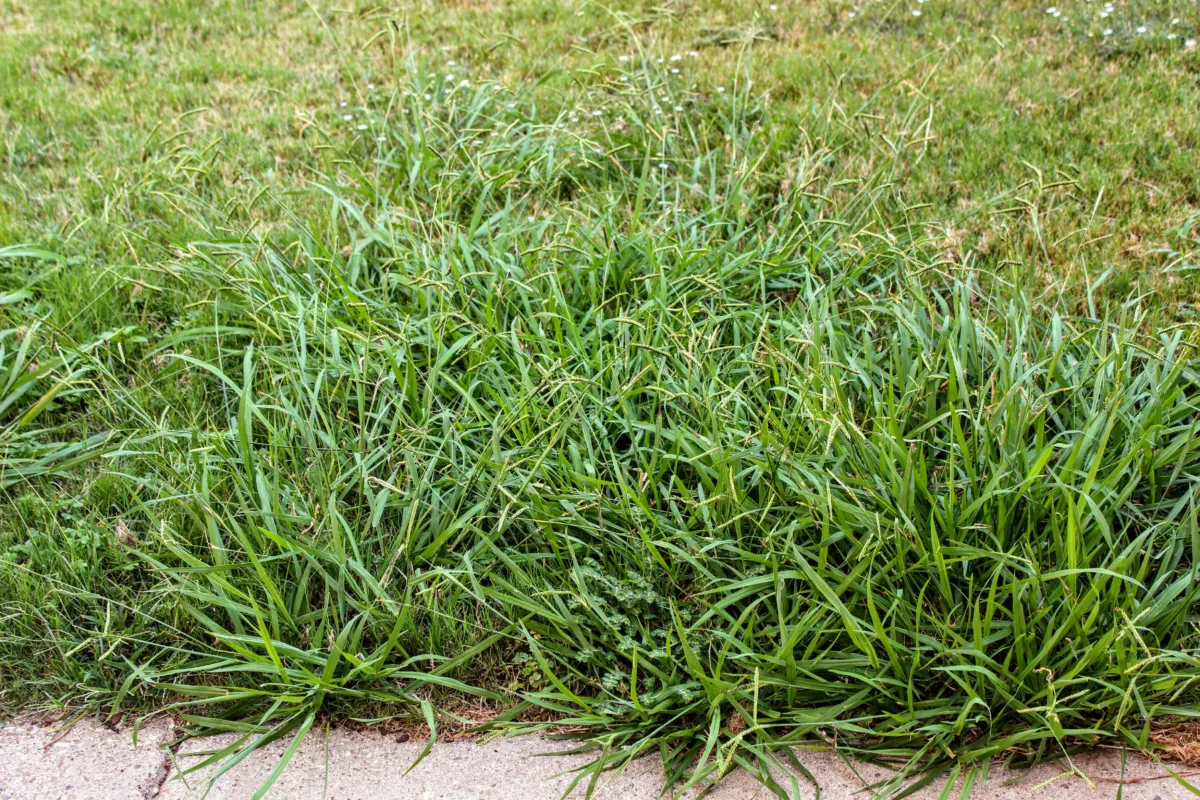
Crabgrass is often more unsightly than unpleasant. It doesn’t pose any danger to the human or animal inhabitants of a garden. However, it can be a problem in a lawn or elsewhere in a garden due to the methods it uses to survive better than neighboring plants.
Many people believe that crabgrass simply thrives on lawns because it crowds out nearby plants. But in fact, this plant actually produces its own natural herbicides which kill nearby plants. These allelopathic chemicals affect the microbial life in surrounding soil which can significantly inhibit the growth of other plants nearby. Toxins it produces can also have a direct toxic effect on other plants. In other words, crabgrass does not play well with others.
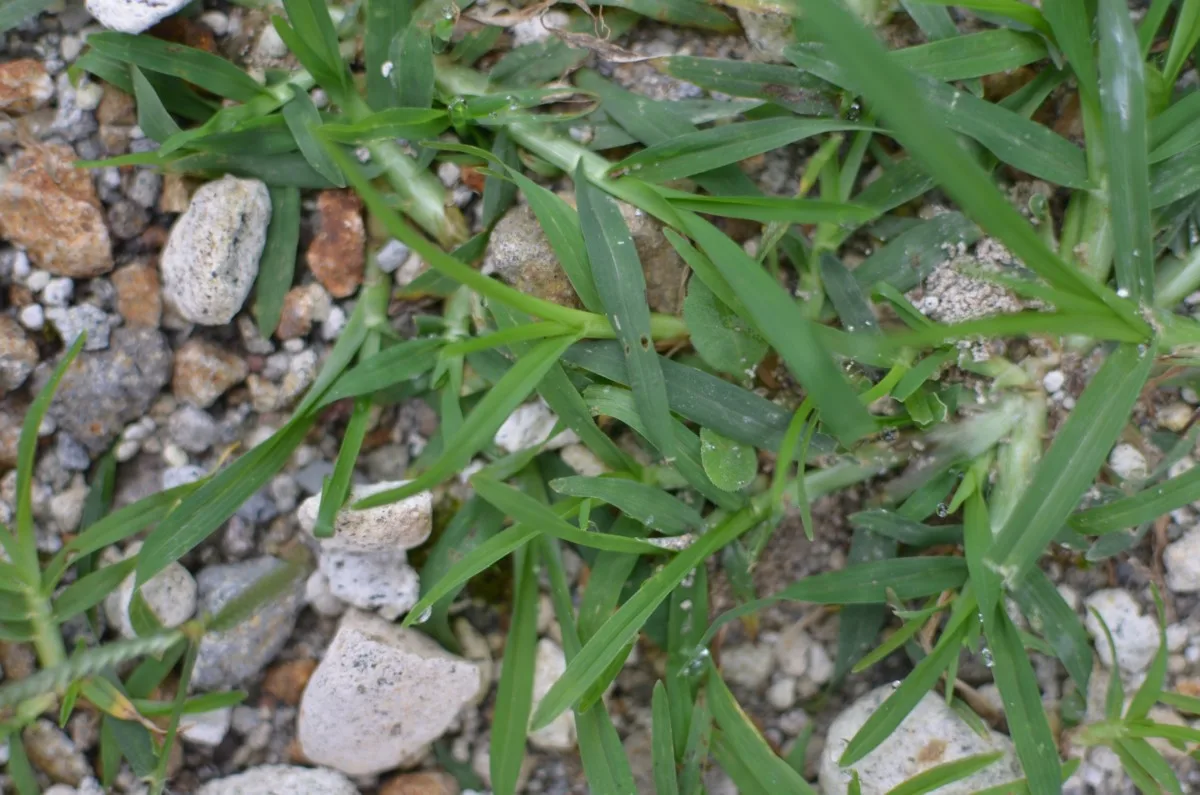
This allelopathic effect might mean that you don’t want to grow it in your garden, or at the very least, that you want to restrict its growth in certain areas. That said, like many other allelopathic plants, it can still find a place in a productive, biodiverse garden.
Crabgrass is a particularly hated plant. But much of the animosity towards it has, unfortunately, been drummed up by an industry that loves to sell gardeners on the idea of using harmful, wildlife and plant-killing pesticides and herbicides to create a perfect mono-crop of neatly trimmed grass.
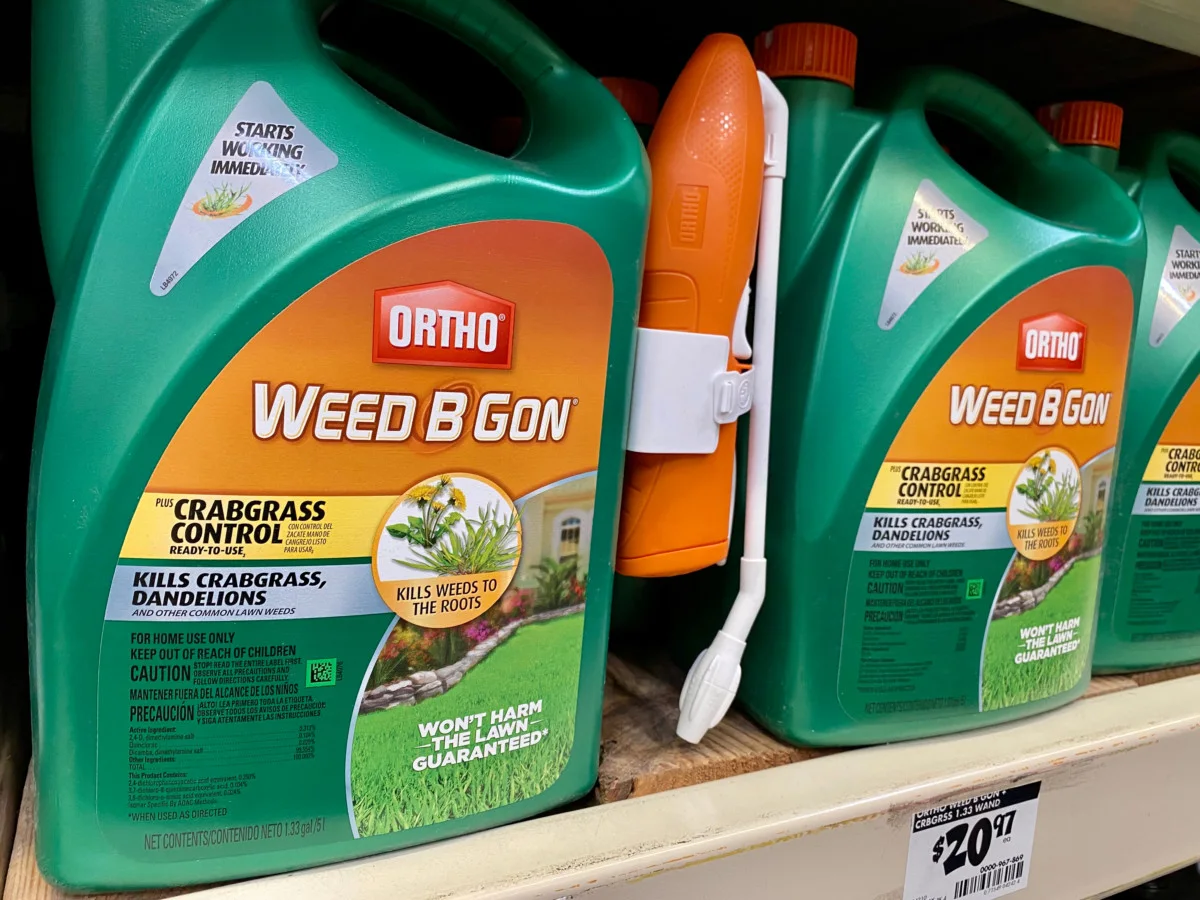
Do You Really Need A Perfect Lawn?
One of the first things to consider, when it comes to deciding whether or not you want to eradicate crabgrass from your garden, is whether or not you really need a perfect lawn.
Many gardeners buy into the idea that the number one garden goal is to create a perfectly level, unblemished patch of grass lawn.
But lawns are an environmentally damaging and artificial goal. In nature, such monocultures rarely exist. When nature is given free rein, all sorts of different plants crop up. That biodiversity is far better for wildlife and serves to create a more resilient ecosystem.
Embracing a lawn that includes native ‘weed’ species can allow you to embrace a more ecologically sound way of gardening.
One of the positive things about crabgrass where it dies back in winter is that the spaces it leaves can more easily be colonized by a range of other native wildflowers and plants.
Of course, if you don’t like the look of your lawn, you could also consider replacing it with a vibrant, colorful and productive forest garden, a creeping thyme lawn, or some lively food and flower-producing polycultures. You don’t have to have a lawn at all.
How Crabgrass Can Be Useful in Your Garden
A few patches of crabgrass in a more untidy but wildlife-friendly garden can be beneficial for a number of different creatures. For example, crabgrass seeds are beneficial food for numerous songbirds, mourning doves, Northern Bobwhites, wild turkeys, various sparrows and other birds. The leaves are also used by wild turkeys and, to a lesser extent, by white-tailed deer.
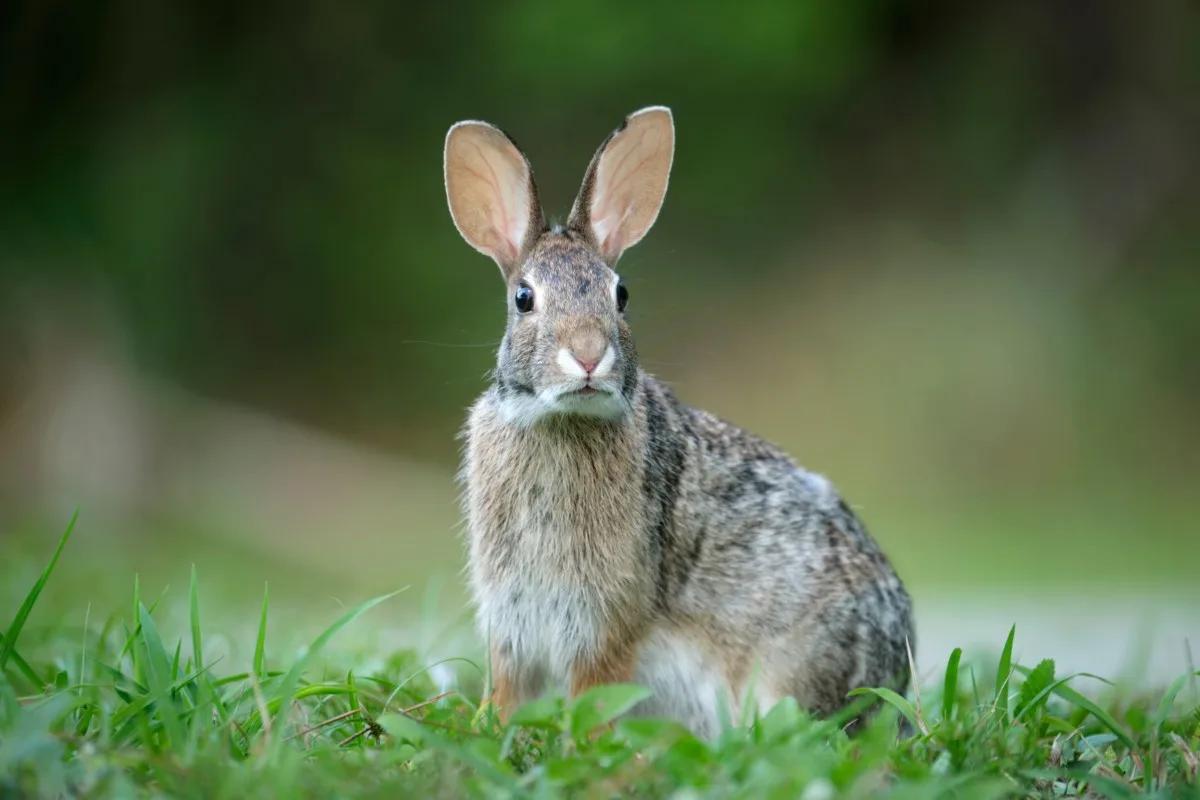
Attracting wildlife to your garden is not only good for the creatures themselves but also for you, the gardener. Songbirds, for example, might eat slugs and other pests, helping to keep the system in balance and their numbers down. The wildlife you attract might also keep other pests at bay.
Another thing to consider is that you can use crabgrass.
Crabgrass seeds can be roasted and ground to make flour, or even brewed to make beer. This is just one example of the many weeds that can also become useful edible crops. Bear in mind that if you’re collecting seeds when they form, those seeds will not go on to germinate and spread the crabgrass to other parts of your garden.
Prevention is Better than Cure
If you decide that it would be better not to have crabgrass in a certain part of your garden, then prevention is always better than cure. If you do want to maintain a good lawn, free from crabgrass, take care to keep the preferred grasses healthy, so no gaps form where crabgrass can pop up.
- Keep the blades on your mower as high as possible.
- Spread some of the grass clippings back on the lawn to maintain fertility.
- Consider incorporating some nitrogen fixers such as clover to improve fertility.
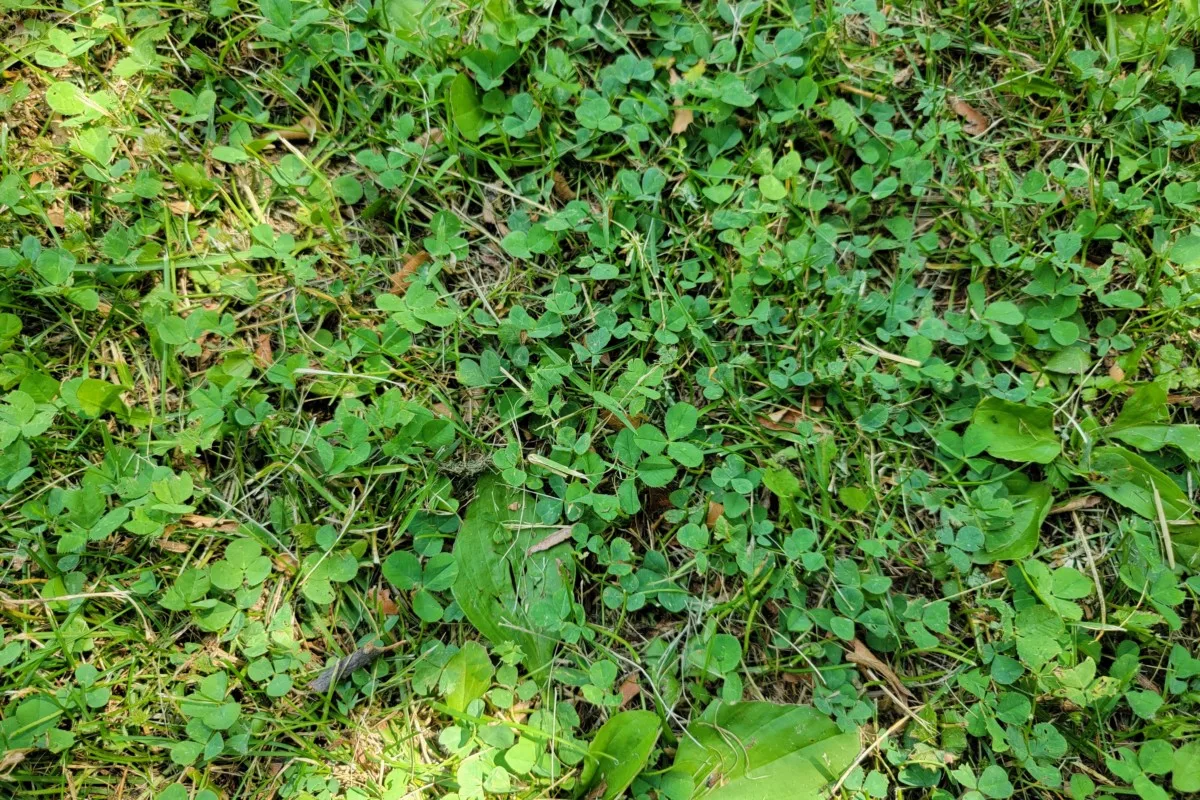
- Consider allowing dandelions and other deep-rooted plants to take root in your lawn to improve drainage/ make for a healthy soil ecosystem.
- Create shade for sun-damaged/ arid areas by planting trees (a fruit tree or two can be a great addition to many gardens).
- Collect rainwater to use in keeping the lawn well-watered during periods of drought.
By taking measures to keep your preferred lawn plants healthy, you can keep your lawn thick, lush and looking good without it being a monoculture. And it’s less likely that large areas of crabgrass will form.
Preventing The Spread of Crabgrass
If crabgrass has already popped up amid your other lawn plants and you want to avoid it spreading throughout the rest of your garden, the key thing is to prevent it from going to seed. Mowing or trimming the area before seeds form will be your first line of defense. Crabgrass can produce around 150,000 seeds per plant. So if you don’t want it to spread, don’t let it disperse those seeds!
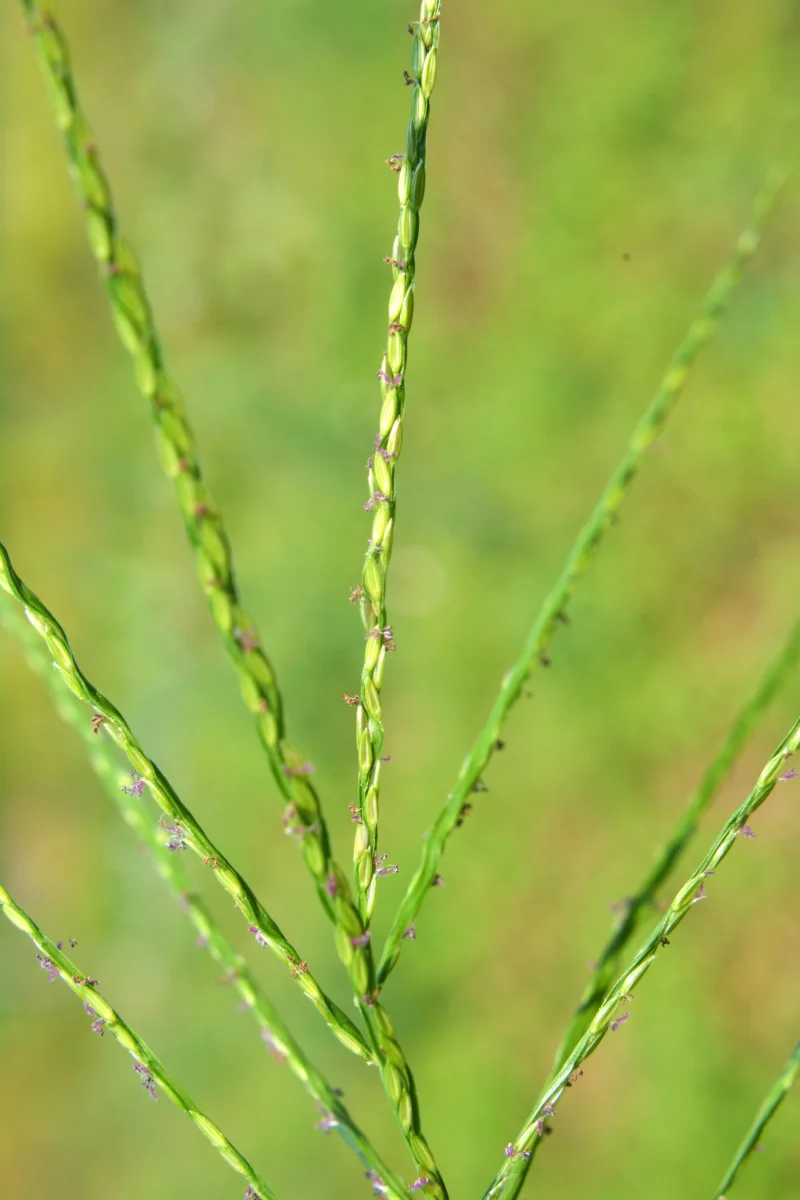
But what if, in addition to preventing its spread, you want to get rid of the areas of crabgrass altogether in an organic garden? Well, when it comes to getting rid of crabgrass naturally, three potential solutions are often given. Those are:
- Using organic weedkillers on the areas of crabgrass.
- Solarizing the soil to kill plants and seeds.
- Removing the crabgrass by hand.
Let’s take a look at each of those solutions in turn.
Organic Weed Killers
In an organic garden, you will want to avoid the use of harmful chemical herbicides and pesticides but there are organic weed killers on the market. So should you use one of these organic herbicides to get rid of the crabgrass in your garden?
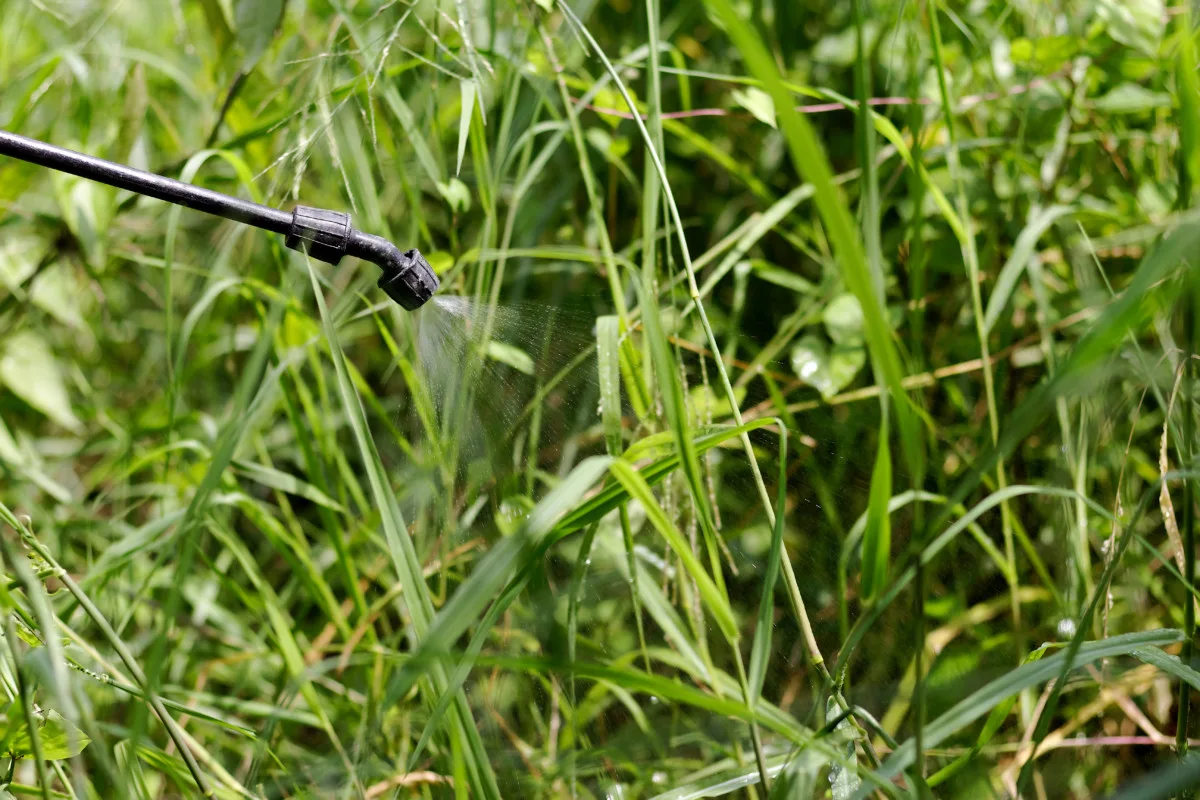
In my opinion, the answer is no. It’s important to remember that even organic weedkillers, such as those which use clove oil or citric acid, will kill not only crabgrass but also any other plants they come into contact with. They can also disrupt the delicate balance in the soil system below. It is almost always better not to take this ‘nuclear option’ when trying to get rid of weeds.
Solarization
The second solution to get rid of crabgrass naturally is solarization. Solarization involves placing a clear plastic sheet over the crabgrass and allowing the heat from the sun to bake the plants to a crisp and make any seeds in the soil below non-viable.
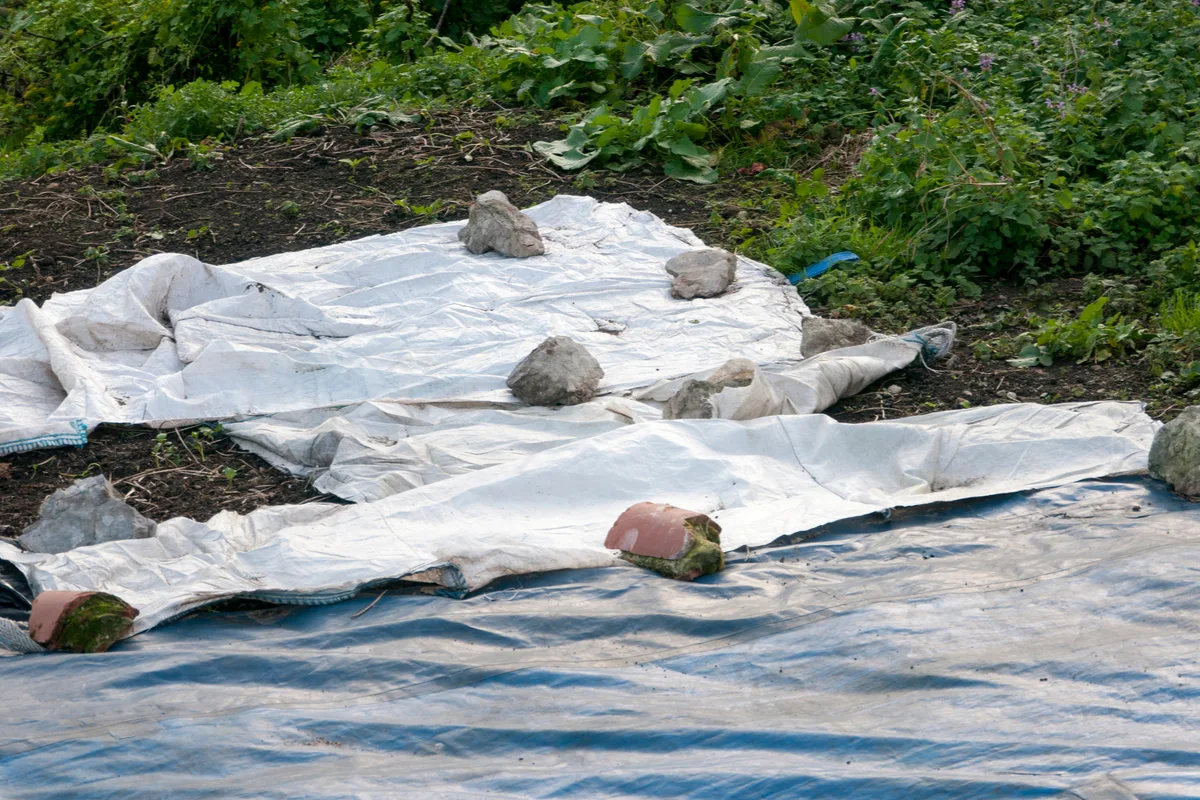
The benefit of this solution over the former is that the area will not be contaminated with anything (natural or not) that will kill your plants once the plastic has been removed. This means that, once the plastic has been removed, you can replant the area with grass, or whichever other plants you choose.
However, arguably, this is not the optimal solution either.
First of all, baking the soil with intensified solar energy will not only kill plants and seeds but can also kill the natural soil biota in the top layers of your soil. In an organic garden, it’s usually best to disrupt and disturb the fragile and precious soil ecosystem as little as possible.
Removing Crabgrass By Hand
That leaves us then, with one final solution: removing the crabgrass by hand. Unfortunately, this is a rather laborious process. But if we want to garden ethically, sustainably and organically, and yet don’t want crabgrass in our gardens, then this is the optimal choice.
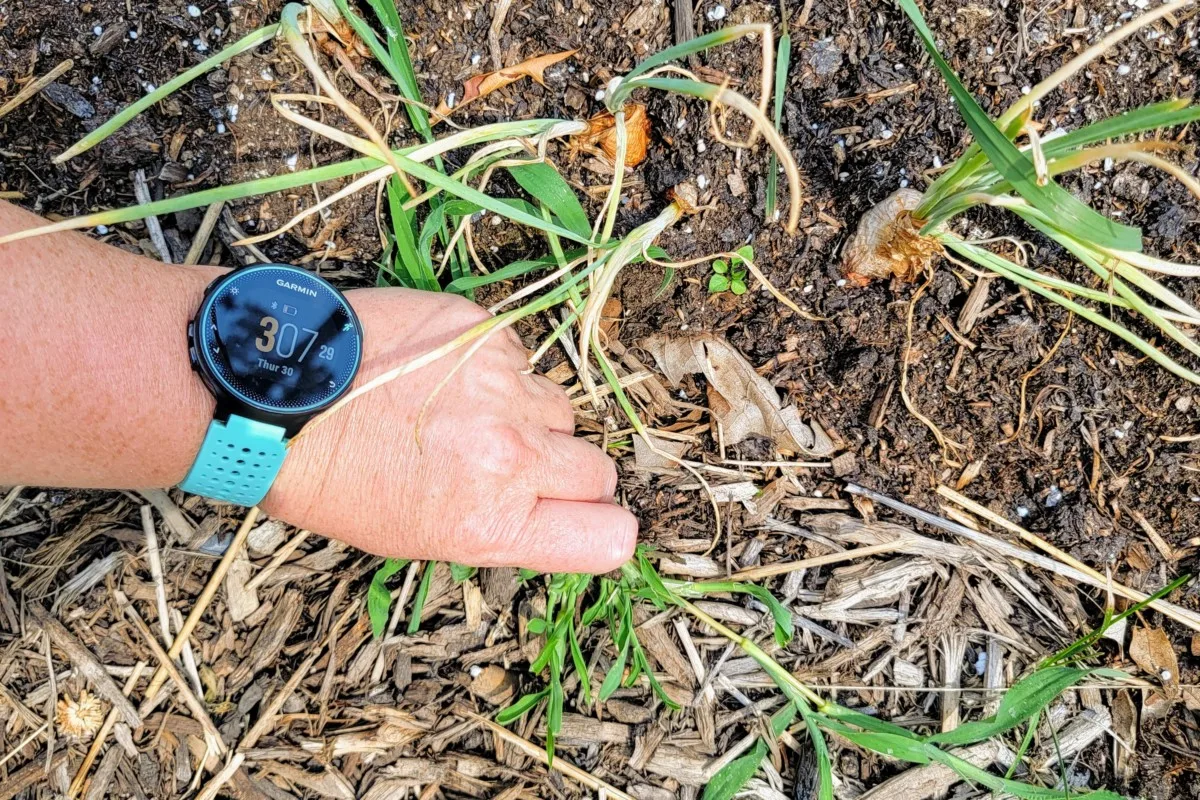
Pulling up areas of crabgrass before they go to seed, and continuing to pull up any rogues each subsequent season, should eventually allow us to eliminate the plant from our gardens. Though if your neighbors are not as assiduous, you will, of course, have to repeat this process year after year.
After trying this for a couple of seasons, you may once more have to ask yourself whether getting rid of crabgrass altogether is something that you really need or want to do.

Get the famous Rural Sprout newsletter delivered to your inbox.
Including Sunday ramblings from our editor, Tracey, as well as “What’s Up Wednesday” our roundup of what’s in season and new article updates and alerts.

